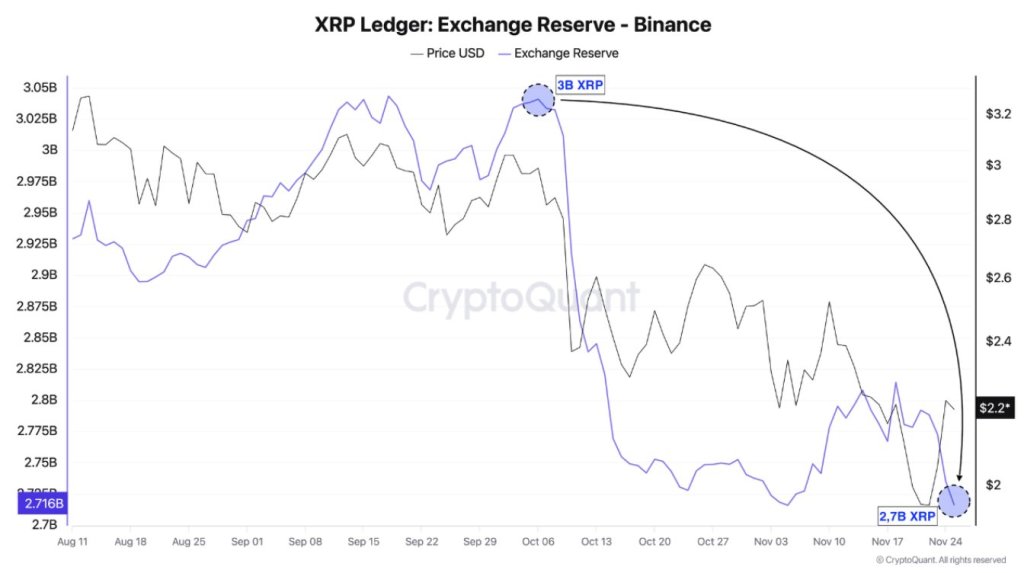FDV (Fully Diluted Valuation) is the total market value of a crypto token if every coin from its maximum supply were already in circulation. It matters because it reveals the real potential size of a cryptocurrency project, not just what’s visible from today’s small circulating supply. Also, it’s a key metric traders use to judge how much future dilution could impact price, especially when locked tokens start unlocking later.
In this guide, you’ll learn exactly how to calculate FDV, how it compares with market cap, and when a high FDV should make you cautious before buying into a new altcoin.
What is FDV (Fully Diluted Valuation) in Crypto?
FDV (Fully Diluted Valuation) is a projection of a crypto project’s total market value, assuming that every single token the project is ever going to create is already in circulation right now. You can think of it this way: it gives you the theoretical maximum value of the entire project. In crypto trading, FDV plays a key role in understanding long-term price potential and dilution risk.
Quick Tip: In a crypto project, the circulating supply is the number of coins available to the public and actively trading, whereas the maximum supply is actually the hard-coded cap on the total number of coins that will ever exist over the project’s lifetime. FDV considers maximum supply, not current circulating supply.
You know, when you see a cryptocurrency listed on an exchange, you mostly see its current price, which is multiplied by the tokens that are currently in circulation. Well, that number is the current “Market Cap”, but we will talk more about that later. FDV takes things a bit further.
FDV looks into the future, as it considers every token that is locked up. Here, these locked tokens include the ones reserved for the founding team, the early investors, the tokens kept for future development funding, or even tokens that will be released as rewards for staking or mining over the next several years. So, you can see that FDV is kind of a sneak peek into the project’s full economic scale. Hence, you are essentially asking: “what is this project worth if all the tokens were available to be bought or sold today?”
Now consider Bitcoin. You know, it has a fixed maximum supply of 21 million coins, and about 19.93 million are already in circulation today. At a price of $122,236 per BTC, the market cap is roughly $2.56 trillion (19.93 million × $122,236). But, here, the FDV is $2.56 trillion (21 million × $122,236). Hence, the small gap actually shows that almost all bitcoins are already out there, but not 100%.

Now, if you are buying altcoins, understanding FDV is even more important. Because a high FDV with a small current supply can eventually limit future upside once new tokens unlock. You can explore our list of best altcoins to buy here.
Why FDV Matters in Crypto Investing?
FDV matters in crypto investing because it should immediately cause you concern when it is significantly higher, sometimes 10, 50, or even 100 times higher than the current Market Cap. This kind of difference is actually the biggest warning sign because it strongly suggests extreme future dilution risk.
You see, the FDV metric is actually a theoretical number because it assumes the token price will stay the same even when all those new tokens are released. But in reality, that almost never happens. So, when huge amounts of tokens unlock, they generally create intense selling pressure.
Now, let’s look at why this gap between the current value (Market Cap) and the maximum theoretical value (FDV) is so risky for you:
- Massive Token Unlocks: As we discussed, a typical new project might launch with only 10% or 15% of its total supply unlocked. And, the remaining 85% to 90% is set to unlock over several years, usually for the team, advisors, and some big private sale investors. In many projects, a significant portion of these tokens goes to insiders who may sell once unlocked. You know, many projects today follow a vesting schedule where tokens unlock linearly over 3-5 years. Now, imagine a 3-year vesting schedule, where every single day, new tokens are released from the locked pool. Well, this will add constant selling pressure to the market, and if there isn’t enough new money coming in to buy those more tokens, the price just drops over time.
- Signal of Overvaluation: A super high FDV often signals that the project is overvalued, and its current price is mainly driven by hype, not by any real utility or adoption. Always check whether the token utility genuinely supports long-term value or if it’s just speculative. Also, this is why many analysts today often talk about the “FDV/Market Cap ratio” being too high.
- Emission rates and rewards: Some crypto networks mint new tokens continuously as staking or liquidity rewards. Hence, high emissions add a steady supply and can weigh on prices if demand doesn’t keep up, especially when overall demand and supply conditions in the market turn weak.
- The Founder/Team Risk: When you see a project with a low circulating token supply, it often means the team and the earliest private investors hold most of the remaining locked tokens. Actually, they are holding all the “paper wealth”. Now, when their tokens finally unlock, they are generally incentivized to sell, especially if the project hasn’t lived up to its initial hype. So, this one also creates selling pressure.
- Low Liquidity Issues: Sometimes, a low circulating supply and a high FDV result in the token having poor liquidity. Since only a small bit of the total supply is actually trading, a large buy or sell order can move the price dramatically, and this leads to high volatility, making the asset much riskier. Hence, it means you might not be able to sell your tokens easily without crashing the price yourself.
Also, TVL (Total Value Locked) is even another important metric to evaluate, especially when you’re analyzing DeFi projects. You can read our full guide on what TVL in crypto is.
How to Calculate FDV?
To calculate FDV, you need to multiply the crypto project’s current token price by the maximum total supply. So, calculating the Fully Diluted Valuation is actually pretty straightforward because you only need two main pieces of information. First, you must know the exact maximum supply of the token, and then the current market price of one token.
Here is the formula to calculate FDV –
FDV = Current Token Price x Maximum Total Supply
Here, this maximum total supply is the key term, and it actually refers to the absolute maximum number of tokens that will ever exist for that project. You can easily find this number in the project’s whitepaper, its official documentation, or even on some major crypto data websites like CoinMarketCap or CoinGecko. And, the current price is just the price you see it trading at right now.
Now, let’s walk through an easy example, just to make sure you get it perfectly.
- Step 1: Find the Current Price: You check the exchange and see that the price of one $GAME token is around $2.50.
- Step 2: Find the Maximum Total Supply: You look up the tokenomics and find that the maximum supply is fixed at 500,000,000 $GAME tokens. Also, this number will never change, generally speaking, which is important for the calculation.
- Step 3: Calculate the FDV: You simply need to multiply those two numbers together.
FDV = $2.50 x 500,000,000 = $1,250,000,000
So, the Fully Diluted Valuation for Project $GAME is $1.25 billion.
Now, let’s say $GAME currently only has 50 million tokens actually circulating in the market. Hence, its current Market Cap would be $2.50 x 50,000,000, which is just $125 million. Now again, look at that difference. The $1.25 billion FDV tells you that this coin is essentially priced as a $1.25 billion project today, even though its current market capitalization is only $125 million.
Quick Tip: Never mix circulating supply with the maximum supply, or else you’ll end up calculating the current market cap instead of FDV.
Also, the FDV calculation is totally different for cryptocurrencies that do not have a hard cap on their supply, like in the case of Ethereum, for example. Ethereum’s supply is technically uncapped, meaning new ETH can be created over time, although its tokenomics are complex and change based on network activity like burning.
So, for coins with no maximum supply, calculating a truly meaningful FDV becomes really difficult, maybe even impossible in the way we just described, because that crucial “Maximum Total Supply” number is always moving or simply doesn’t exist as a fixed number. So, generally, FDV is most useful for coins that have a set, hard limit on how many tokens can ever be created.
What’s a Good FDV Ratio in Crypto?
There is no single “good” FDV ratio, as it is a subjective metric that actually depends heavily on the specific project, its stage, tokenomics, and an investor’s risk tolerance.
You can calculate the FDV ratio (Market Cap / FDV) and visualize it in this way:
- Higher Ratio (closer to 1, or 100%): Well, this is generally seen as a safer and more stable sign because most tokens are already in circulation.
- Lower Ratio (e.g., below 0.5): This indicates that actually a large portion of the token supply is still locked and will be released in the future. So, there is a future dilution risk.
You know, the risk is high dilution here. So, if the FDV is, say, 15x the circulating market cap, you will face massive potential supply inflation that could crush the token price as vesting schedules unlock. Generally, a healthy FDV-to-Market Cap ratio is typically considered to be in the 2x to 5x range.
FDV vs. Market Cap: What’s the Difference?
Market cap and FDV both multiply a price by a supply number, but they actually tell different stories. Market cap uses the circulating supply, which counts only the tokens that are available for trading right now. Basically, it answers the question, “How much is the project worth today based on the coins people can actually buy or sell?”
But, FDV uses the maximum total supply, which includes all coins that could ever be created. It generally answers, “What would the project be worth if every possible token already existed and traded at today’s price?”
| What it measures | Market cap | Fully Diluted Valuation (FDV) |
| Supply number | Uses the current circulating supply only | Uses the maximum total supply (including future unlocks) |
| Formula | Price × circulating supply | Price × maximum total supply |
| Future supply included? | No | Yes |
| What it tells you | Current size and liquidity | Potential size if all tokens are out |
| Blind spot | Ignores locked and vesting tokens | Assumes price stays the same as supply grows |
| Best use | Comparing projects today, gauging trading depth | Assessing long‑term dilution and supply risk |
Market cap is good for sorting projects by liquidity and size today. If a coin has $500 million in market cap and another has $5 billion, you know the latter is much bigger and probably has deeper markets. So, Market cap is basically good for helping traders determine if a coin is large enough to absorb big orders without tremendous price slippage. It’s also good for comparing how much money is invested in various ecosystems today.
FDV, on the other hand, tries to look at the future. It multiplies today’s price by the maximum total supply to estimate how big the project could get if every token were already circulating. This also makes it a useful tool for detecting hidden dilution.
Take, for instance, a token with a low market cap of $20 million but an FDV of $400 million. That twenty-to-one disparity indicates plenty of locked tokens are on the way. So, if you purchase the token today, your stake may get diluted by a large margin as new coins get released. Now, compare that to a token whose FDV and market cap are virtually the same, say Bitcoin (not much difference). In that case, there isn’t much hidden or locked supply, so dilution risk is lower.
What Are the Limitations of FDV in Crypto?
The main limitations of FDV are that it’s a theoretical maximum value, which ignores real market demand and liquidity issues, fails to account for the crucial timing of future token unlocks, and becomes unreliable for tokens without a fixed supply cap.
- Ignores liquidity and demand: FDV assumes all tokens will eventually hold the same value, but it really doesn’t account for market demand or how easily those tokens can be traded.
- Hides Liquidity Problems: Basically, it assumes that you can easily sell the entire supply at the current price. But if the circulating supply is tiny (low float), a high FDV means poor liquidity and makes the token highly vulnerable to a crash from a single large seller.
- Fails to Track Unlock Timing: It treats all locked tokens equally and ignores the crucial vesting schedule. A 10x FDV is far riskier if the bulk of that supply unlocks all at once in a massive cliff event versus a gradual release.
- Meaningless for Dynamic Supply: You know, if a token doesn’t have a fixed, hard cap (like Ethereum), the “Maximum Total Supply” is eventually speculative only or always changing. So, for these projects, calculating a reliable FDV is almost impossible.
Hence, you should always use FDV as your dilution risk radar, but pair it with the current market cap and genuine adoption metrics like TVL to get an honest valuation.
The post What Is FDV (Fully Diluted Valuation) In Crypto (2025)? appeared first on CryptoNinjas.

You can get bonuses upto $100 FREE BONUS when you:
💰 Install these recommended apps:
💲 SocialGood - 100% Crypto Back on Everyday Shopping
💲 xPortal - The DeFi For The Next Billion
💲 CryptoTab Browser - Lightweight, fast, and ready to mine!
💰 Register on these recommended exchanges:
🟡 Binance🟡 Bitfinex🟡 Bitmart🟡 Bittrex🟡 Bitget
🟡 CoinEx🟡 Crypto.com🟡 Gate.io🟡 Huobi🟡 Kucoin.





















Comments